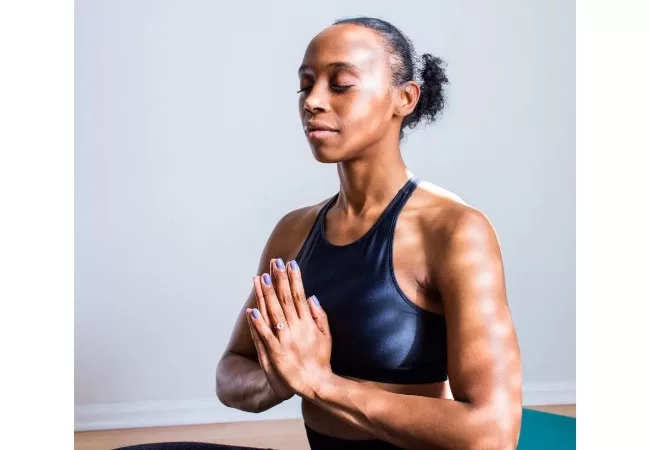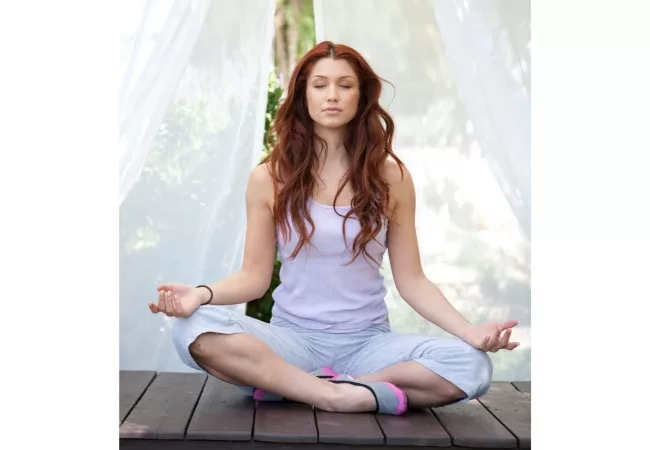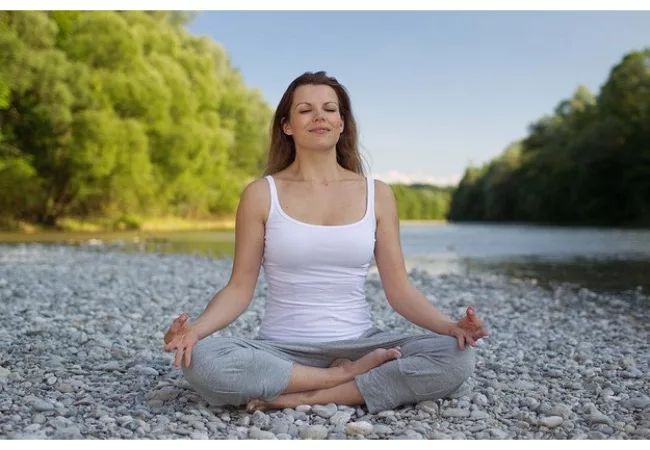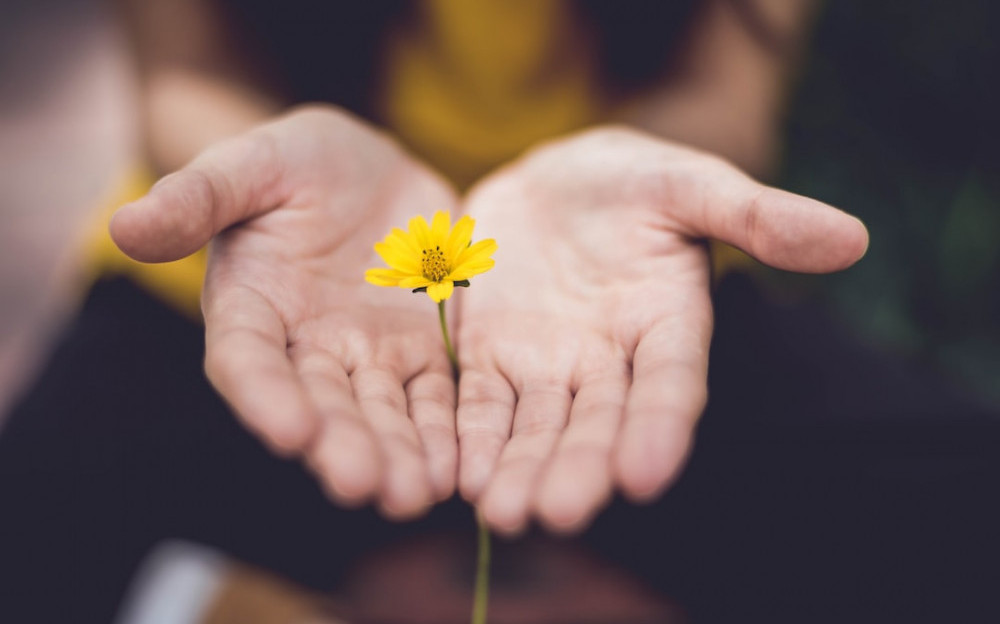Meditation is like a healing elixir for your life, offering tons of benefits for both your physical and mental well-being, and the best part? It’s absolutely free and doesn’t demand much of your time.
If you think that meditation is a challenging practice, then this post is tailor-made for you. The truth is, meditation is for everyone, and anyone can do it. Depending on your experience level and the amount of time you can dedicate to meditation, there are specific techniques that suit your needs.
For those who have invested a considerable amount of time in practicing meditation or other spiritual disciplines, some exercises might be more suitable. On the other hand, if you’re just starting to explore meditation, you’ll discover your own benefits through simple, beginner-friendly exercises.
That’s the whole point of meditation – giving yourself a break and listening to what you truly want.
In this post, I’m excited to introduce you to basic meditation techniques for beginners that anyone can start with and actually enjoy.
Meditation does not have to be hard and boring. With these techniques, you will begin to realize the first benefits and positive changes in both your mental and physical health.
So, let’s get started.

Basic meditation techniques for beginners
What is the essence of meditation?
No matter what techniques or practices you encounter on your meditation journey, there is something key when it comes to meditation:
The essence of meditation is to achieve a state of deep relaxation and inner peace.
If you find yourself exhausted and struggling, or feel that the exercises are overwhelming you, then it’s probably not the right way to meditate, or perhaps the practices are not suitable for you yet.

Meditation techniques are designed to bring you into a sense of mindfulness and clarity, from which you may reach heightened awareness and inner peace.
You can’t get there if you can’t find relaxation within yourself in the present moment.
Ultimately, it’s about achieving a state of inner balance and a deeper connection with oneself and the world around us.
For example, when you practice meditation breathing:
You pay attention to the sensation of each breath entering and leaving your body.
You become aware of the rise and fall of your chest or the sensation of the breath passing through your nostrils.

In this moment, you are fully present, experiencing the here and now. Your mind becomes calmer, and the chatter of your thoughts begins to fade. You feel a sense of inner peace and relaxation washing over you.
This is the essence of meditation – letting go of distractions, finding stillness, and connecting with your inner self.
Basic meditation techniques for beginners
Breath Awareness Exercises
The importance of breathing the right way
Focusing on the breath is at the core of many meditation practices, especially for beginners.
The breath is always with us, making it a readily accessible point of focus. By paying attention to the breath, you can gradually quiet the mind, reduce anxiety, and create a sense of inner peace wherever you are.
You must have heard advice that encourages taking deep breaths when you are in nervous situations or experiencing anxiety attacks.

Breathing slowly and deeply has a tremendous impact on our body and mental health.
Deep breathing triggers the body’s relaxation response. When you breathe deeply and slowly, it activates the parasympathetic nervous system, which counteracts the stress response (fight or flight).
Deep breathing can also stimulate the release of endorphins, which are natural mood lifters. Endorphins create feelings of happiness and reduce the perception of pain and stress.
Guide for Practicing Breath Awareness:
Inhaling and Exhaling Naturally:
Start by finding a quiet place where you can sit comfortably.
Close your eyes gently, or if you prefer to keep them open, lower your gaze. Begin to breathe naturally, without forcing or altering your breath in any way.
Simply observe the breath as it naturally flows in and out of your body.

Paying Attention to the Sensation of Breath:
Shift your focus to the physical sensations associated with breathing.
Notice the rise and fall of your chest or abdomen as you breathe in and out. Feel the coolness of the inhale and the warmth of the exhale.
Pay attention to the gentle movement of the air as it enters and exits your nostrils.
Allow yourself to become fully immersed in the tactile experience of breathing.
Letting Go of Distractions and Returning to the Breath:
It’s perfectly normal for your mind to wander during meditation, especially as a beginner.
When you notice your thoughts drifting to other matters—whether it’s daily concerns, to-do lists, or random thoughts—simply acknowledge them without judgment.
Then, gently guide your attention back to your breath.
You can visualize your thoughts as clouds passing through a clear sky, allowing them to drift away as you return your focus to the breath.

Tips for Staying Mindful of the Breath:
Consistency Is Key:
Establish a regular meditation routine. Setting aside a specific time each day, even if it’s just a few minutes, can help you build the habit of breath awareness.
Use Breath as an Anchor:
Whenever you feel stressed or overwhelmed during the day, take a moment to reconnect with your breath. This mini-meditation can help you stay centered and calm amidst life’s challenges.
When you start to sense stress creeping in or feel the weight of overwhelming emotions, take a moment to pause. Find a comfortable posture, whether sitting or standing, and close your eyes if possible. Then, turn your attention to your breath.

Begin by inhaling deeply and slowly through your nose, allowing your lungs to fill with air.
Feel your chest and abdomen rise as you take in each breath.
Then, exhale slowly through your mouth, letting go of any tension or negativity with each outward breath.
As you continue to focus on your breath, you’ll notice a subtle but profound shift in your state of mind.
The act of consciously breathing in this manner activates the body’s relaxation response. It signals to your nervous system that it’s time to calm down and unwind.
Practice Patience:
Be patient with yourself as you learn to maintain focus on the breath.
Remember that meditation is a skill that improves with time and practice. There’s no need to rush or expect immediate results.
Explore Guided Meditations:
If you’re struggling to stay mindful of your breath, there are many guided meditation sessions or meditation apps that you can try with. They provide structured guidance and can be particularly helpful for beginners.
Here are some of my suggestions and my most favorite guided meditations:
This is an Original 10 minute guided morning meditation, esepcially for in the morning after you just wake up and start a new day.
Come and join Manoj Dias, a meditation teacher, as well as the co-founder and VP of Open, for a 10-minute guided meditation that places self-love at the forefront.
10-minute guided meditation to calm your body and mind in preparation for a good night’s rest
Create a Peaceful Environment:
Find yourself a cozy and peaceful spot for your meditation practice where you can truly relax. You can create a meditation corner in your bedroom, arranging everything for comfort and relaxation.
You can try to add some candles and maybe some soothing scents to really get into that Zen zone!

Loving-Kindness Meditation
This is my favourite practice among basic meditation techniques for beginners.
This method is rooted in the desire for the happiness and well-being of all beings, including yourself, as love is the highest frequency of all.
Begin with yourself:
To start your loving-kindness meditation, find a quiet and comfortable place to sit or lie down.
Close your eyes and take a few deep breaths to center yourself.
Now, visualize yourself and repeat a series of positive phrases or affirmations. These phrases are expressions of good wishes, such as “May I be happy. May I be healthy. May I be safe. May I live with ease.”

As you recite these phrases, truly feel the love and compassion directed toward yourself. Imagine that you are surrounding yourself with warmth and kindness.
Extend well-wishes to loved ones:
After focusing on yourself, gradually shift your focus to your loved ones.
Picture family members, friends, or anyone dear to you. As you hold them in your thoughts, repeat the same well-wishing phrases.
For example, “May [loved one’s name] be happy. May [loved one’s name] be healthy. May [loved one’s name] be safe. May [loved one’s name] live with ease.”
Imagine sending these positive wishes to each person individually, envisioning them bathed in the warmth of your loving-kindness.
Include acquaintances and even difficult people:
In the next stage, expand your circle of well-wishing to include acquaintances, coworkers, or anyone you may have neutral feelings toward.
Gradually, you can even extend these good wishes to people you may have conflicts or difficulties with.
This is a powerful aspect of loving-kindness meditation, as it helps soften your heart and promote forgiveness and understanding. As you continue to repeat the phrases, visualize each person experiencing happiness and well-being.
Wish happiness and well-being for all beings:
In the final stage of your loving-kindness meditation, broaden your focus to encompass all beings in the world. Imagine people from different cultures, backgrounds, and walks of life.
You may also include animals, plants, and the Earth itself. Repeat the well-wishing phrases for the benefit of all beings, saying, “May all beings be happy. May all beings be healthy. May all beings be safe. May all beings live with ease.”
As you do this, sense a profound connection with the collective consciousness of humanity and all living things.
Here are some guided Loving-Kindness Meditation
In addition to breathing awareness exercises and Loving-Kindness Meditation, gratitude walking is an excellent practice for beginners. It not only nurtures your spiritual senses but also enhances your sense of mindfulness. I’ve written a post about mindful walking, which you can check out to learn more about this technique.
Final words:
In conclusion, meditation is a beautiful journey of self-discovery and inner peace that is accessible to everyone, including beginners. I hope my basic meditation techniques for beginners inspire you to start your meditation journey.
Remember, the essence of meditation lies in finding stillness amidst life’s chaos, rekindling your connection with the present moment, and nurturing self-love and compassion.
As you embark on your meditation journey, be patient with yourself. There will be moments of distraction and restlessness, but these are all part of the growing process. Just give it a try, and I know you will love it.






